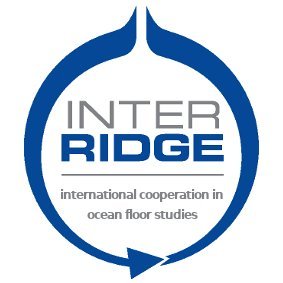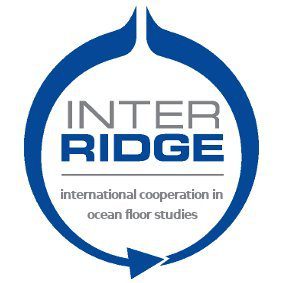InterRidge Working Group
Oceanic Tranform Faults
Chairs
Marcia Maia (France, Geophysics, tectonics) marcia.maia@univ-brest.fr
Barry Hanan (USA, Isotope Geochemistry) bbhanan@mail.sdsu.edu
Daniele Brunelli (Italy, Petrology) daniele.brunelli@unimore.it
Members
Diane Arcay (France, geophysics: subduction models), Marco Cuffaro (Italy, geophysics: models), Colin Devey (Germany, geochemistry, petrology), Juao Duarte (Portugal, tectonics, analogue models), Laurent Geoffroy (France, tectonics: passive margins), Cédric Hamelin (Norway, isotope geochemistry), Seung-Sep Kim (Korea, geophysics), Serge Lallemand (France, tectonics: subduction), Marco Ligi (Italy, geophysics), Christine Meyzen (Italy, petrology, geochemistry), Eric Mittelstaedt (USA, geophysics: models), Ingo Grevemeyer (Germany, geophysics), Sven Petersen (Germany, hydrothermalism), Lars Ruepke (Germany, geophysics: models), Pedro Terrinha (Portugal, tectonics, geophysics)
Period
2017-2019
Objectives
Transform faults, especially large-offset ones, have been thoroughly investigated by different teams around the world (e.g., Bonatti et al., 1979; Bonatti, 1978; Karson and Dick; 1983; Sinha and Louden, 1983; Detrick et al., 1982; Cormier et al., 1984; ten Brink and Brocher, 1988; Tucholke and Schouten, 1988; Detrick et al., 1993; Wolfe et al., 1993; Bonatti et al., 1994; Mueller et al., 2000; Bonatti et al., 2005). From their work, we derived the vision of transform faults as complex plate boundaries that could deform under the influence of far field stresses, especially changes in plate motion (e.g., Bonatti et al., 1994; Gasperini et al., 2001). However, not all transforms react equally to equivalent stress changes, suggesting the influence of parameters such as offset length, spreading rates and mantle temperature and heterogeneities (e.g., Fornari et al., 1989; Michael et al., 1994; Pockalny et al., 1997; Bonatti et al., 2003; Maia et al., 2016). Furthermore, together with numerical models, observational studies also reveal the role of transform faults in shaping the geometry of mantle flow and active processes at mid-oceanic ridge axis (e.g., Bonatti et al., 2001 and 2003; Ligi et al., 2008; Cipriani et al., 2009; Gregg et al., 2009). Many of the above processes are most evident at the extreme limits of spreading rate and transform offset size. For example, at slow and ultra-slow spreading ridges, the notion of mega transforms was applied to the large-offset Romanche and Andrew Bain transforms to explain their particularly complex morphologies, which reflect complex evolution of the transform domain through time. In contrast to most oceanic transform boundaries that consist of a single narrow strike-slip zone offsetting two mid-ocean ridge segments, the slowly slipping Romanche and Andrew Bain transforms are characterized by a broad and complex multi fualt zone of deformation similar to some continental strike-slip systems (Ligi et al., 2002; Sclater et al., 2005). Such faulting system may act as pathways for seawater and allow for extensive fluid-rock interactions. Oceanic transform faults and fracture zones have long been hypothesized to be sites of enhanced fluid flow and biogeochemical exchange (Boschi et al., 2013; Detrick et al., 1993; Francis, 1981; Gregg et al., 2007; Roland et al., 2010). In this context, the serpentine forming interaction between seawater and cold lithospheric mantle rocks is particularly interesting. The transformation of peridotite to serpentinite not only leads to hydration of oceanic plates and is thereby an important agent of the geological water cycle (Rupke et al., 2004), it is also a mechanism of abiotic hydrogen and methane formation (McCollom and Bach, 2009; Seyfried Jr. et al., 2007), which in the present seafloor support archeal and bacterial communities (Kelly et al., 2005; Perner et al., 2007; Shock and Holland, 2004). Inferring the likely amount of mantle undergoing serpentinization reactions therefore allows estimating the amount of biomass that may be autotrophically produced at and around oceanic transform faults and mid-ocean ridges (Cannat et al., 2010). Although the above studies have advanced our understanding of the enormous complexity of these major plate boundaries and their role on fundamental processes building the oceanic lithosphere, such as fluid circulation, mantle exhumation and mantle flow, several questions remain to be addressed because they require a joint effort of different communities such as geochemists, petrologists, geophysicists, microbiologists, fluid and numerical modeling specialists. This working group would like to focus on five questions that are likely of large interest to the Earth sciences community.
- How do large and mega-transform domains react to both far- and near- field stress changes?
- How do transforms interact with the underlying mantle. What are the effects of temperature, rheology and composition?
- What is the interplay between transform dynamics and magmatism?
- Which relationship exist between oceanic transform faults and their counterparts on continental margins?
- Are oceanic transform faults sites of intense fluid-rock interaction and biogeochemical exchange?

